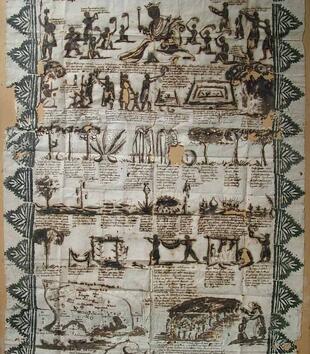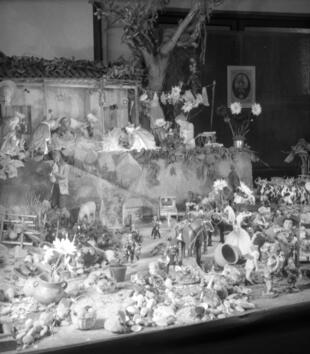You are here
Volume 6: Issue 1
-
As part of their activities in Kongo and Angola Capuchin Franciscan friars created dozens of images and wrote hundreds of pages of text in works that they called "practical guides." These Capuchin didactic images form an exceptionally important corpus that enriches our knowledge of central Africa and dramatically multiplies the European-format visual record about the African continent before 1800.
-
Early modern central Africa comes to life in the images that Capuchin friars. This Capuchin central African corpus consists today in four extant manuscripts connected by form and content. This essay offers additional visual material from the corpus by featuring details of each individual vignette that comprise the 1650s poster now in the Museo Francescano, as well as the unpublished versos of the Parma Watercolors that feature text.
-
Donald Jackson’s The Black Cross illustrates some of the ways contemporary calligraphic art engages sacred writ: through the interplay of word and image, recording the artist’s physical gestures, and making visible the divine.
-
Embracing the belief that the humblest of individuals participated in Jesus’s birth with their presence and their gifts alongside the wisest, Christians of every era have wished to display their own participation and contribution to this foundational Christian event. This article describes the ways in which a traditional, rural-inspired society like that of Santiago, Chile at the end of the nineteenth and the beginning of the twentieth centuries expressed itself through its nativity scenes.



